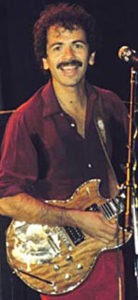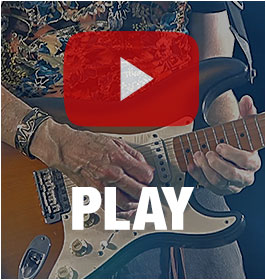Still riding high on the critical and commercial success of his band’s debut album, Santana by Santana, and its followup, Abraxas, Carlos Santana had entered his “experimental” period. Thus followed records like Caravanserai, Love Devotion Surrender (with jazz-rock pioneer John McLaughlin), and Illuminations (with Alice Coltrane, Avant-garde keyboardist, and wife of one of Carlos’ heroes: jazz saxophone legend John Coltrane).
 And, while he was searching for new compositional inspiration, he continued his long-time quest for the “perfect” tone. The first Mesa Boogie amp was released in 1972, and as Santana had been integral in its development, he was assuredly one of its first users. But he still hadn’t settled on a single guitar, at times playing a Gibson Les Paul Standard, Les Paul Custom, Gibson SG, and possibly other models.
And, while he was searching for new compositional inspiration, he continued his long-time quest for the “perfect” tone. The first Mesa Boogie amp was released in 1972, and as Santana had been integral in its development, he was assuredly one of its first users. But he still hadn’t settled on a single guitar, at times playing a Gibson Les Paul Standard, Les Paul Custom, Gibson SG, and possibly other models.
By 1975, Yamaha had introduced their SG175, and had contacted Carlos Santana regarding playing that model. Far from an instant love affair, the relationship developed slowly. Santana’s first reaction? He told Yamaha the guitar was too light, that the frets were too thin, and that it just wasn’t delivering the sustain he craved. Luckily for both parties, Yamaha took his comments to heart.![]()
Carlos Gets Involved
Eventually, the two developed the SG2000. This model incorporated a neck-through-body design (instead of the neck being bolted onto the body, it is one solid piece of wood that runs from the headstock to the tailpiece). A Mahogany body delivered the weight, which led to greater sustain and a fatter tone. And strips of Mahogany flanking the neck (called the “T-Cross System) were also incorporated.
The hardware was converted to brass, which purportedly added to the sustain as well (the ability of brass hardware to enhance tone has been debated by artists for the last 30 years). In addition, a “Sustain Plate” was added: a brass plate that sat underneath the tailpiece.
Defining the Santana Sound
The tone of Carlos Santana’s Yamaha SG guitar can be heard on a number of landmark recordings, one of the most notable being 1977’s Moonflower. From that record came the studio version of “She’s Not There,” along with live versions of “Dance Sister Dance (Baila Mi Hermana),” “Let the Children Play / Jugando,” and “Europa,” all of which blew away the previously released studio versions. Some of Santana’s straight-ahead rock hits, like “Open Invitation” and “All I Ever Wanted” were also recorded on the SG2000.
Carlos continued to use the Yamaha until the early ’80s, both in concert and on albums including Inner Secrets, Marathon, Zebop!, and Shango. By 1982 he had migrated totally to Paul Reed Smith guitars, which he continues to play to this day. However, his years’ playing the Yamaha SG guitar were pivotal in his development of the smooth, round, endlessly sustaining tone which has become his trademark

